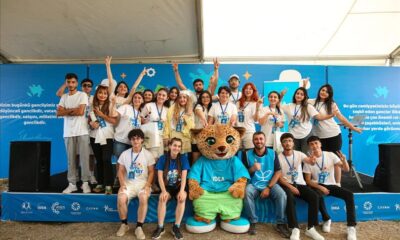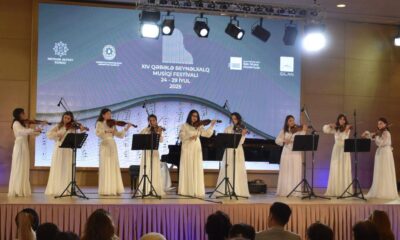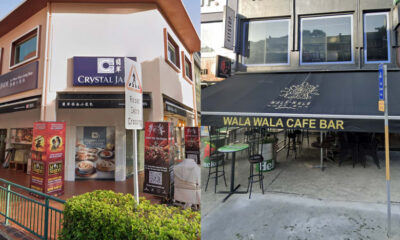World
Emirates Transforms Airbus A380 into a Global Luxury Icon
The Airbus A380, renowned as the largest passenger aircraft ever constructed, has become synonymous with luxury travel, largely due to the strategic efforts of Emirates Airlines. By purchasing an impressive 123 of the 251 A380s sold worldwide, Emirates has not only elevated the aircraft’s status but also significantly impacted its brand image as a premium carrier. This article explores how Emirates has transformed the A380 into a global icon of luxury air travel.
Emirates’ Commitment to the A380
Emirates’ decision to invest heavily in the Airbus A380 set the airline apart from its competitors. While other airlines, such as Singapore Airlines, placed modest orders, Emirates embraced the A380 as a cornerstone of its fleet. This commitment has allowed Emirates to sustain the A380 program, a fact underscored by the airline’s profitability. In 2024, Emirates was named the most profitable airline globally, a testament to its effective utilization of the A380.
The financial implications of this decision are profound. With many airlines reducing their A380 fleets or preparing to retire them, Emirates’ support has been critical in maintaining the aircraft’s reputation. The airline’s 39 aircraft reduction announcement was pivotal, leading Airbus to declare the end of A380 production.
Elevating Luxury Air Travel
Emirates has significantly enhanced the luxury experience aboard the A380 by incorporating unique features such as an onboard bar and shower spa, which are exclusively available to first and business class passengers. These amenities create an atmosphere reminiscent of private jet travel, further solidifying Emirates’ image as a leader in luxury air travel. The upper deck features a lounge area with a large television that streams live satellite TV, allowing passengers to unwind in style.
The decision to introduce such luxurious amenities was not without risk. Emirates initially questioned whether the lounge would resonate with passengers, especially given the potential loss of eight business class seats. However, the lounge quickly proved popular, offering travelers a space to relax and socialize during long-haul flights.
While Emirates has set a high standard for luxury, it is essential to acknowledge that the A380’s design also facilitates premium services from other airlines, including British Airways and Qatar Airways. Emirates consistently ranks among the top five airlines in Skytrax’s World Airline Awards, further enhancing its prestige as a premium carrier.
Branding the A380
The close association between Emirates and the A380 is unparalleled in the aviation industry. By acquiring a majority of the A380 fleet, Emirates has effectively linked the aircraft to its brand identity, which has not been observed since the days of the Concorde. The Concorde, operated exclusively by British Airways and Air France, became a symbol of luxury and speed, just as the A380 has for Emirates.
This branding strategy is evident in how the A380 stands out in the skies. While aviation enthusiasts can differentiate between various aircraft models, casual travelers easily recognize the distinctive double-decked A380. This recognizability has allowed Emirates to cultivate a unique image, making it the go-to carrier for luxury air travel.
Future Aspirations and Challenges
As Emirates looks to the future, it continues to invest in upgrading its A380 fleet. Recent refurbishments include the addition of 56 premium economy seats, reflecting a shift in market demand. This new configuration will maintain the existing 14 first class and 76 business class seats.
Emirates is also diversifying its fleet by introducing newer aircraft models, such as the A350 and 787 Dreamliner. With an order of 205 Boeing 777Xs, Emirates aims to replicate its A380 success. This new aircraft is expected to play a significant role in the airline’s future, although it may not possess the same unique characteristics that made the A380 a luxury icon.
As the airline navigates this transition, it faces the challenge of maintaining its premium image while adapting to changing market dynamics. The A380s are now mid-aged, and the airline may need to cannibalize its fleet to keep portions operational.
Emirates has successfully transformed the Airbus A380 into a luxury travel icon, leveraging its unique features and strategic branding to create a premium experience for passengers. The journey ahead will require balancing innovation with legacy as the airline adapts to a new era of aviation.
-

 Lifestyle4 months ago
Lifestyle4 months agoHumanism Camp Engages 250 Youths in Summer Fest 2025
-

 Sports4 months ago
Sports4 months agoDe Minaur Triumphs at Washington Open After Thrilling Comeback
-

 Business4 months ago
Business4 months agoKenvue Dismisses CEO Thibaut Mongon as Strategic Review Advances
-

 Sports4 months ago
Sports4 months agoTupou and Daugunu Join First Nations Squad for Lions Clash
-

 Top Stories4 months ago
Top Stories4 months agoColombian Senator Miguel Uribe Shows Signs of Recovery After Attack
-

 Health4 months ago
Health4 months agoNew Study Challenges Assumptions About Aging and Inflammation
-

 World4 months ago
World4 months agoASEAN Gears Up for Historic Joint Meeting of Foreign and Economic Ministers
-

 Business4 months ago
Business4 months agoOil Prices Surge Following New EU Sanctions on Russia
-

 Entertainment4 months ago
Entertainment4 months agoDetaşe-Sabah Violin Ensemble Captivates at Gabala Music Festival
-

 Entertainment4 months ago
Entertainment4 months agoBaku Metro Extends Hours for Justin Timberlake Concert
-

 Business4 months ago
Business4 months agoU.S. House Approves Stablecoin Bill, Sends to Trump for Signature
-

 Top Stories4 months ago
Top Stories4 months agoRethinking Singapore’s F&B Regulations Amid Business Closures







